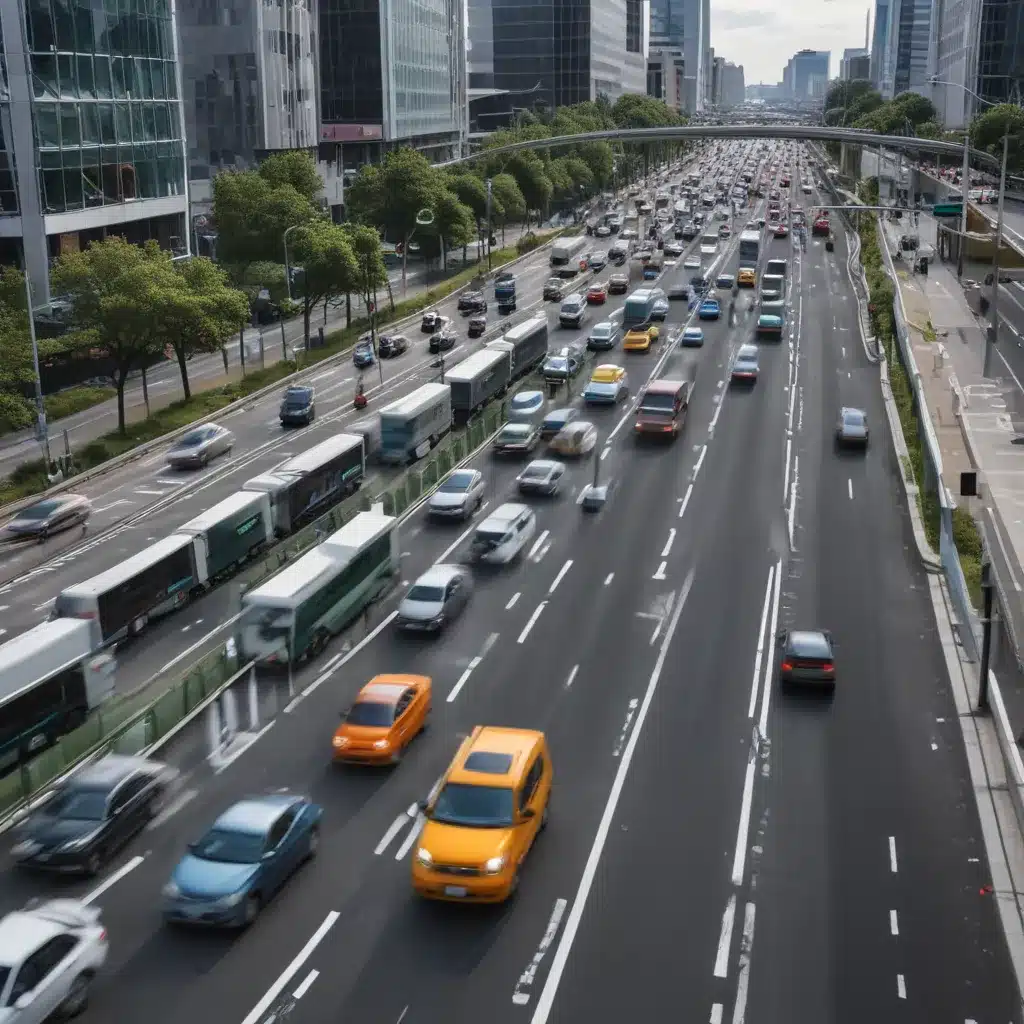In a bustling city like London, traffic congestion is a persistent headache that plagues commuters and city planners alike. The endless sea of idling vehicles, the frustrating commute times, and the environmental toll of all that wasted fuel – it’s enough to make anyone long for a smarter, more efficient solution.
Well, my friends, the future is here, and it’s being driven by the power of the Internet of Things (IoT). By harnessing the wealth of data collected by connected devices, we can revolutionize the way we manage urban traffic and ease the burden on our roads.
The IoT Advantage
The beauty of IoT lies in its ability to gather real-time data from a vast network of sensors and devices. Imagine a city where traffic lights, parking meters, and even the cars themselves are all communicating with each other, sharing critical information that can be used to optimize the flow of vehicles [1].
With this kind of interconnectivity, we can paint a far more accurate and dynamic picture of traffic patterns. Gone are the days of relying on outdated reports or subjective observations – IoT provides us with a constant stream of detailed data that allows us to make informed, proactive decisions.
Intelligent Traffic Management
One of the key ways IoT is transforming traffic management is through the use of smart traffic signals. By equipping intersections with advanced sensors and processing power, we can create adaptive traffic lights that respond to changing conditions in real-time [2].
Imagine a scenario where a traffic light detects a sudden surge of vehicles approaching, and it automatically adjusts the timing to reduce wait times and keep traffic moving. Or consider a system that can detect the presence of pedestrians and cyclists, and prioritize their safe passage across the intersection. These are the kinds of innovative solutions that IoT is bringing to the table.
Connected Vehicles and Predictive Analytics
But the benefits of IoT-powered traffic management don’t stop there. The rise of connected cars, equipped with a wealth of sensors and communication capabilities, is opening up a whole new world of possibilities [3].
As these vehicles share data about their location, speed, and driving conditions, traffic management systems can use predictive analytics to anticipate and prevent congestion before it even happens. Imagine a scenario where your car receives a notification that an accident has occurred up ahead, and it automatically suggests an alternate route to avoid the gridlock.
Integrating Public Transport
IoT’s impact on traffic congestion extends beyond just private vehicles. By integrating IoT-enabled systems with public transportation networks, we can create a seamless, efficient transportation ecosystem that encourages people to leave their cars at home [4].
Imagine a scenario where you can check the real-time status of buses and trains on your smartphone, plan your journey accordingly, and receive alerts about any delays or disruptions. Or consider a system that can automatically adjust the schedules and routes of public transport to better match the changing patterns of demand.
Sustainability and the Environment
The benefits of IoT-powered traffic management extend beyond just convenience and efficiency. By reducing congestion and optimizing the flow of vehicles, we can also make significant strides in improving the environmental impact of our transportation systems [5].
Fewer idling cars means less fuel consumption and lower emissions, which translates to cleaner air and a healthier planet. And as more cities embrace the use of electric vehicles, IoT-enabled infrastructure can play a crucial role in facilitating the transition to a greener, more sustainable future.
The Future of Smart Cities
As we continue to grapple with the challenges of urbanization and the ever-increasing demands on our transportation networks, the role of IoT in shaping the cities of tomorrow becomes increasingly crucial. By harnessing the power of connected devices and intelligent algorithms, we can create a future where traffic congestion is a thing of the past [6].
Imagine a world where your morning commute is a breeze, where you can seamlessly transition between different modes of transportation, and where the air you breathe is cleaner and healthier. This isn’t just a pipe dream – it’s a reality that’s within our grasp, thanks to the transformative potential of IoT [7].
So, the next time you find yourself stuck in gridlock, take a moment to appreciate the technological revolution that’s unfolding all around you. The future of traffic management is here, and it’s being driven by the unstoppable force of the Internet of Things.
[1] https://www.linkedin.com/pulse/driving-towards-smarter-future-how-iot-ai-can-ease-traffic-prasad
[2] https://www.asadria.com/en/how-iot-and-smart-devices-are-reducing-urban-traffic-congestion/
[3] https://www.researchgate.net/publication/325114623_Artificial_Intelligence_Enabled_IoT_Traffic_Congestion_Reduction_in_Smart_Cities
[4] https://www.greenbiz.com/article/3-ways-iot-already-making-cities-smarter
[5] https://www.mdpi.com/2076-3417/12/4/2043
[6] https://telnyx.com/resources/iot-monitoring-traffic
[7] https://ieeexplore.ieee.org/document/8643187













